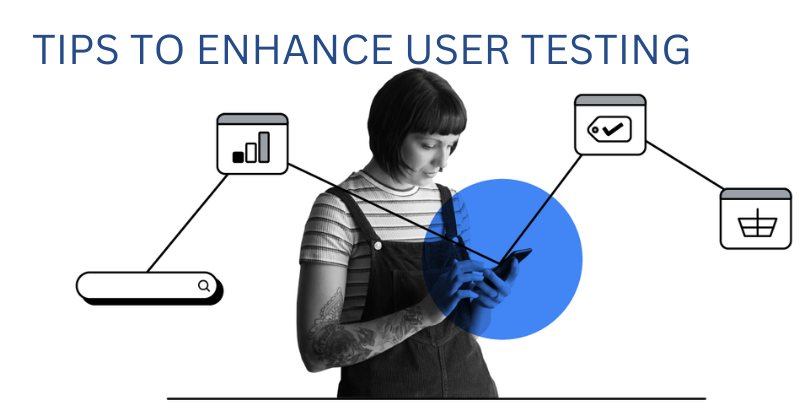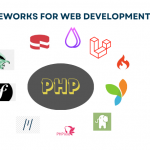Crafting a successful software product is simply not possible without understanding and valuing the user experience. User testing is the most crucial part of the product development process for creating user-centric, resonant, and custom designs. It enables us to take a look at the behavior, needs, and challenges of the users. Through user testing, we can not only meet user needs but also surpass their expectations, delivering an exceptional product.
In this article, we have condensed Plumscope’s expertise into seven key user testing pointers. These tips offer game-changing strategies for an interesting, focused, and iterative design process.

Table of Contents
Early Testing
Define your Objectives
Drafting relevant questions and tasks
Selecting Right Audience
Get more with In-Person Testing
Treating Design as a Repetitive Process
Continuous Testing during the Redesigning Process
Conclusion
Frequently Asked Questions?
Early Testing
The sooner you recognize problems, the easier and more economical it is to address them. Early testing facilitates the collection of user input while the product is still in the development stage. The developers and designers may make minor adjustments before expensive and time-consuming improvements become a must.
Implementation strategies –
Use Agile development techniques to facilitate iterative development and ongoing feedback. User testing is integrated into the development cycle on a regular basis within an Agile framework. Several techniques that you can apply here are:
- Sprint testing – Include user testing during the last stages of every development sprint. This ensures timely and pertinent feedback.
- Prototype testing – Incorporate the use of wireframes, prototypes, or mockups. This aids in early validation of the concepts and design related decision making.
- Constant user feedback – Consider establishing channels for further user feedback. Take into account user forums, direct outreach, or beta testing communities.
Define your Objectives
Setting clear, precise, and measurable goals is essential for effective user testing. This emphasis ensures that the results are practical and have the potential to improve and enhance the product.
Clear and precise objectives make the testing process easy, as they help the testers focus on important data and related insights. Measurable objectives facilitate a quantitative assessment, streamlining the process of determining success and pinpointing areas for enhancement. This targeted strategy guarantees that user feedback is pertinent and directs future modifications of the product. Being explicit and relevant is essential when defining user testing objectives. Some examples of that are–
- An objective such as “assessing the intuitiveness of the new navigation layout” in a website redesign project focuses on an important part of the website and is both defined and measurable.
- An objective like “testing the efficiency of the latest checkout process” in mobile app development is specific and measurable using metrics like the time it takes to complete a sale.
- An objective such as “determining the accuracy of latest data visualization tools in conveying the relevant information” is particularly relevant for complex software, especially for data-heavy applications where precision and clarity are essential.
Drafting relevant questions and tasks

It is important to steer clear of biased or leading questions that can potentially influence the results. For example, instead of asking a leading query like “Do you not find our app’s navigation to be user-friendly?”, it is more useful to ask a neutral question such as, “How would you describe your experience navigating our app?”. In this manner, you can promote candid and uninhibited criticism.
For instance, if the task objective is to gauge how intuitive a new feature is, users are required to carry out actions utilizing that feature.
Selecting Right Audience
The success of the user testing process depends heavily on the participants that are involved in it. Choosing the right set of users that identify as your target audience is crucial for user testing. Determine the characteristics of your target audience, including demographics, skill sets, preferences, attitudes, and behaviors.
Ways to select target audience –
- Reach out to your current clientele. These users will offer insightful, experience-based feedback because they have already engaged with your product. Use the email or product communication channels for direct outreach.
- Social media can be an effective recruitment technique as well. Employ social media sites such as Facebook, Instagram, and LinkedIn to connect with more people that match your target demographic. Recruitment can greatly benefit from specialized online platforms and forums where members of your target audience gather. Providing rewards like freebies, discounts, or access to special features can encourage involvement even more.
- For more specialized or diversified user groups, consider employing expert user testing services. These services can assist in finding participants that fit your target user profile because they have access to a diverse pool of people.
A mix of all these methods will provide you with a bunch of testers who provide insightful, diverse, and important feedback for product development.
Get more with In-Person Testing
Remote user testing frequently misses non-verbal clues and body language, which is why in-person user testing is beneficial. Users’ facial expressions and actions conveying reluctance, perplexity, or joy can provide more information than just their words. Dynamic communication is also possible in face-to-face conversations. Real-time follow-up questions, in-depth exploration of user responses, and prompt clarification of any ambiguities can be successfully done in face-to-face testing.
How do you create a productive environment for in-person testing?
- Establish a setting that welcomes candid and transparent feedback.
- Make sure there are no distractions and that the testing area is pleasant. Reassure participants that there are no right or incorrect responses and that their input is valued.
- Creating an environment that is free from judgement is essential. It should be made clear to participants that all comments, good or bad, are valued and accepted.
- If you want to use recording equipment for conducting an analysis later, make sure you get the participants’ agreement first. Records, both audio and video, can catch things that you might overlook in real time.
Treating Design as a Repetitive Process
Iterative design entails improving the design in response to user inputs and the outcomes of user testing practice tests. This approach acknowledges that design is an ongoing process of improvement and modification. User testing is done on a prototype or early design concept before the iterative process starts. The input from this phase reveals areas for improvement, which prompts the appropriate design modifications. Until the product satisfies usability and experience requirements, this cycle of testing, feedback, and redesign is repeated.
Iterative design’s emphasis on user feedback is one of its main advantages. The design takes user preferences and needs into account by integrating user feedback. By using this method, usability problems and user pain points may be identified early on and resolved, keeping them from being incorporated into the final product.
Continuous Testing during the Redesign Process
Regular insights into user interactions and product responses are obtained through continuous testing. Instead of being a one-time task, testing should be a continuous component of the design lifecycle. Pre-redesign testing assesses the product’s current state and determines its strong and weak points from the perspective of the user. This first stage establishes a baseline and pinpoints important areas for improvement.
Testing evaluates new features and modifications made during redesign to make sure they improve the user experience and satisfy user needs. This phase is essential for improving the design in response to real-time user input. Testing verifies the redesign to confirm that the finished product meets its objectives and doesn’t create any new usability problems. Post-launch continuous testing also contributes to understanding the long-term effects of the redesign and offers information for future updates.
Conclusion
Designing products that resonate with users requires effective user testing as a fundamental step in the process. Establish definite goals and start early testing. Formulate precise questions and tasks, and select the right set of users. To develop user-focused products, take into account in-person testing. Plan for continuing testing as you proceed through the design phase. When test results are carefully analysed and used, the result is a product that exceeds user expectations.
Frequently Asked Questions?
How does product design affect user engagement?
Intuitive and user-friendly designs enhance user engagement by encouraging positive user behaviours like increased usage, repetitive visits, and longer engagement.
Can a visually appealing product design contribute to increased conversion rates?
Yes, a visually appealing product design captures the attention of the users, establishes trust, and has a positive impact on conversion rates by creating an extraordinary online presence.
What is usability testing?
Usability testing is a testing technique used in user-centric interaction design for evaluating a product by testing it on a targeted set of users.
How do you improve usability tests?
Focus on having a wide range of participants that reflect the right set of audience you want to target. Create a testing protocol that is precise and structured. Define objectives and set tasks based on real-life scenarios. Encourage open feedback and also focus on non-verbal cues that users give. Analyze all the data—quantitative as well as qualitative—and use the derived insights for ongoing design refinements.
How do you facilitate user testing?
Create a thorough plan that outlines the goals, procedures, and particular tasks or questions for each participant. Provide a distraction-free environment for testers and aid them in navigating the testing procedure with clear instructions. Track the user behaviour and feedback during the test.


